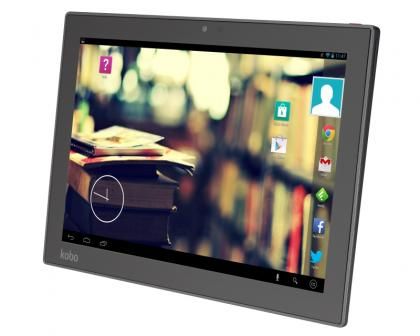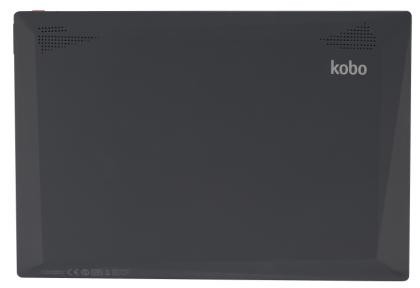Kobo makes a range of tablets with integrated support for Kobo's own content stores, which together go up against Amazon's own Kindle Fire range. Kobo is still a minnow to Amazon's leviathan but, thanks to its iPad-rivalling screen resolution and latest Tegra 4 chipset, the Kobo Arc 10HD may be the tablet to help close the gap.

DESIGN AND FEATURES
It’s not easy to design a tablet to stand out from the crowd, but Kobo has managed it with the Arc 10HD. The tablet's angular design borrows heavily from the Aura HD eBook reader, and the sharp lines and geometric shapes look good and give you something to grip on to. The tablet also has a soft-touch finish that doesn’t pick up fingerprints.

The rear-firing stereo speakers are sensibly placed towards the top of the tablet on the rear, so you don’t block them with your hands. They're surprisingly loud, especially when placed on a flat surface, as the design seems to amplify the sound. Naturally there’s very little bass, but we were still impressed with the mid-range and high-end clarity.

At 9.9mm thick, the Arc 10HD is fairly svelte, but the protruding design doesn’t leave a lot of room for connections. There’s just a Micro USB port for charging and data transfer, a 3.5mm headphone jack and a Micro HDMI video output. The tablet does support Bluetooth and Miracast wireless displays, assuming you have a compatible TV or monitor, but with no card reader you won’t be able to add extra storage to the relatively small 16GB of internal flash memory.
DISPLAY
Apart from the tablet's design, it’s the 10.1in display that instantly grabs your attention. Its 2,560x1,600 resolution makes Android 4.2 incredibly sharp and detailed, with even the smallest text appearing crisp and easy to read. However, once we looked a little closer at our test images, we were less impressed with the screen's colour reproduction. Out of the box, images looked slightly washed out, with a lack of contrast in darker video scenes and a backlight that struggled to make the screen stand out against the reflections from our overhead office lighting. An sRGB colour correction option is enabled by default. Turning it off gave images a blue hue, so we’d recommend leaving it on, although even with it active colour accuracy and contrast simply can’t compete with the Apple iPad Air screen.







